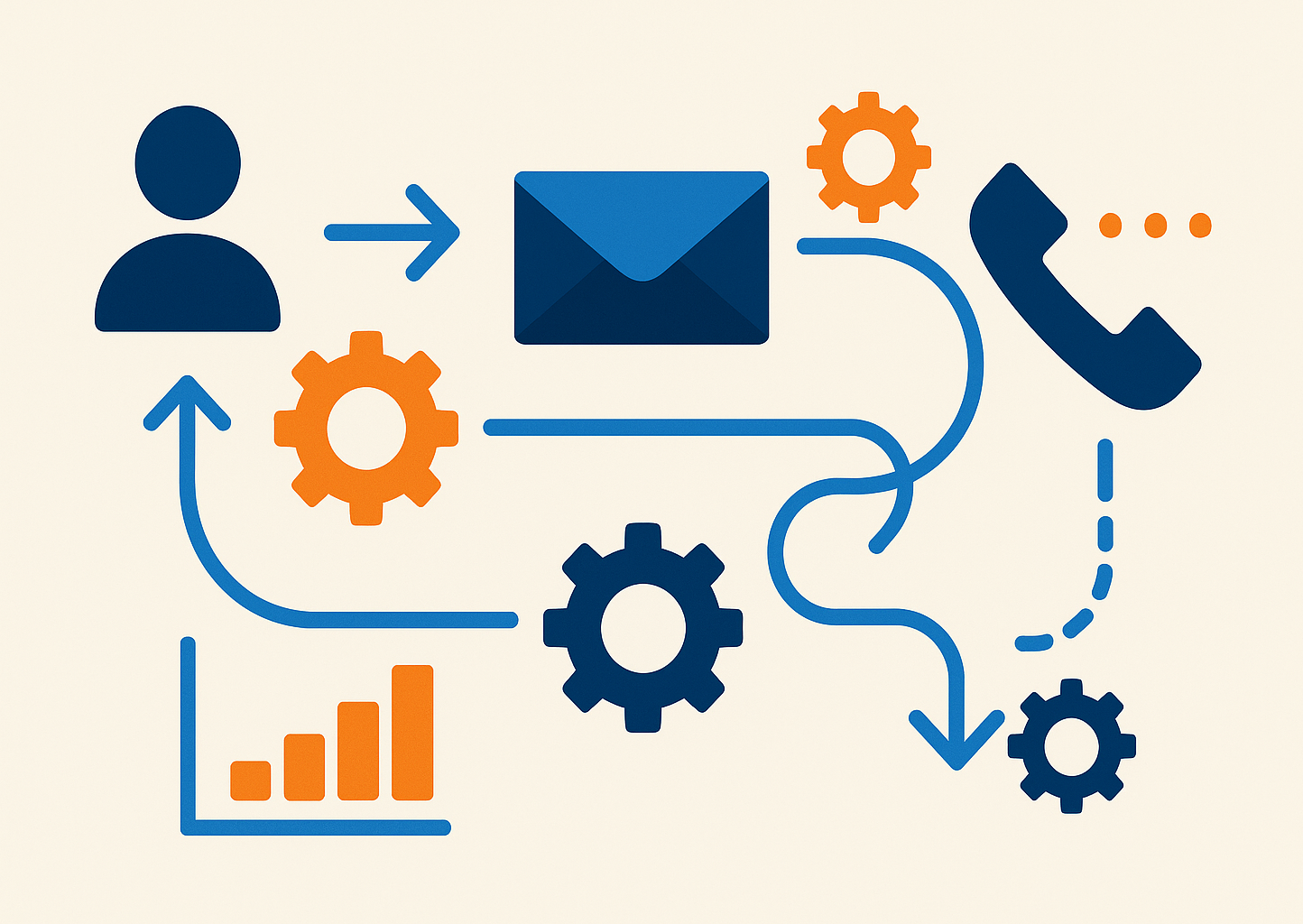Inbound has had a good run.
It’s consistent, measurable, and when it works, it works well. But for many B2B businesses, especially in competitive markets, the growth curve eventually starts to flatten. Content takes longer to convert. SEO rankings stabilise. Paid campaigns become less efficient. And despite best efforts, pipeline momentum begins to stall.
If this sounds familiar, you’re not alone. We speak to growth-focused leaders every week who tell us, “We’ve hit a ceiling with inbound.”
So what’s the next move?
It might be time to take outbound seriously.
Why outbound — and why now?
Outbound today is a different beast. It’s not about scripted calls or generic outreach. When done properly, it’s a scalable, insight-led growth channel that drives proactive pipeline. It targets the right personas at the right time with the right message.
Crucially, outbound doesn’t replace inbound. It enhances it. When layered into your demand engine, it turns inconsistent interest into consistent opportunity.
1. Outbound gives you control
Inbound relies on timing. Buyers need to be looking for your solution when they find you. Outbound changes that. It lets you choose who to target and when, based on strategic priorities rather than search traffic.
You’re not waiting for the right leads to come to you. You’re going to them.
2. It builds predictable pipeline
With outbound, you can model volumes, track conversions, and forecast with far greater precision. This makes it much easier to report with confidence, plan with clarity, and justify investment.
It also speeds up pipeline generation. You’re not reliant on how well a blog performs or whether this month’s paid campaign hits.
3. It complements inbound, not competes with it
Some of your best-fit prospects may never engage with inbound. They’re not searching for your solution. They’re not reading your whitepapers. Outbound lets you reach these audiences directly and spark commercial conversations earlier.
In many cases, outbound turns passive prospects into active pipeline.
4. When it’s informed by insight, it works
Modern outbound is powered by data — intent signals, firmographics, technographics, and buyer behaviour. This allows for highly relevant messaging that feels timely rather than intrusive.
When it lands well, it doesn’t feel like a cold outreach. It feels like you’ve read the room.
5. It tightens the sales and marketing loop
Outbound brings marketing and sales closer together. Sales teams benefit from the awareness marketing has already built. Marketing gets real-time feedback on what messages are landing with decision-makers.
This insight makes every part of your demand strategy sharper.
Time to restart your growth curve?
If your inbound activity is no longer moving the needle, outbound can help you break the plateau. It brings structure, accountability, and commercial urgency into your pipeline strategy.
But outbound only works when it’s done properly:
Dedicated, experienced resource
Accurate, segmented data
Sharp, pain-led messaging
Consistent, multi-touch follow-up
Continuous testing and refinement
That’s exactly what we deliver at Air.
If your current approach isn’t cutting it, let’s build one that does. Talk to us today.
Your pipeline shouldn’t depend on who finds you.
At Air, we help businesses reignite growth by designing and executing outbound strategies that work in the real world. We uncover where opportunity is being missed — whether that’s in targeting, messaging, cadence or conversion — and build outbound engines that generate consistent, qualified pipeline.
Our approach surfaces what’s holding you back and unlocks faster, more predictable revenue.




